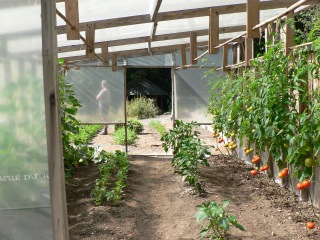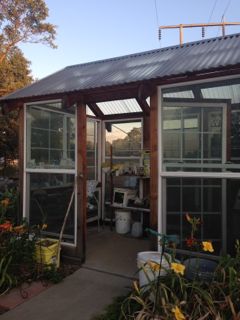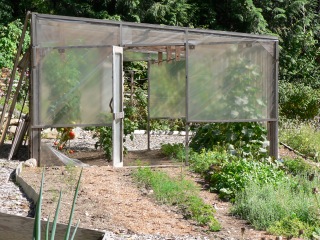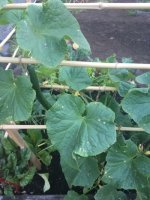Greenhouse Vegetable Gardening
Greenhouse vegetable gardening is becoming more popular for the home gardener. They are more affordable and come in many different sizes making them more available for all of us.
The purpose of a greenhouse is to provide a more favourable growing environment. This is done by trapping heat from sunlight and keeping excess wind and rain from your plants.
What is a greenhouse used for?
- Grow your vegetables all year round.
- Start your seedlings in early spring.
- Protect heat loving vegetables from cold and wet weather.
Greenhouse Vegetable gardening - What to grow?
Tomatoes, peppers, eggplants and cucumbers are principal summer crops for greenhouse growing. These crops do best in temperatures of up to 29 degrees Celsius during the day and down to 13-21 degrees Celsius at night.
Vining crops such as tomatoes and cucumbers can easily be staked using the structure supports.
Lettuce, parsley, radish, scallions and celery are great crops to grow in your greenhouse during the winter months.
Soil preparation is very important for keeping your plants healthy and happy.
Construction materials of common greenhouses:
Frames are usually made of metal, plastic or wood. I suggest choosing which is best for your budget, skill in building it and maintenance.
Walls and ceilings are made of glass, plastic or fiberglass.
Using glass:
- Pros: lasts a long time
- Cons: heavy, difficult to set up, harder to regulate the inside temperature
Using plastic:
- Pros: low cost, easy to install
- Cons: short life span, easily punctured, allows heat loss
Using single layer fiberglass:
- Pros: strong, lightweight, easy to install, easy to cut into odd shapes
- Cons: expensive, easily scratched, loses light transmission over time
Greenhouse basics:
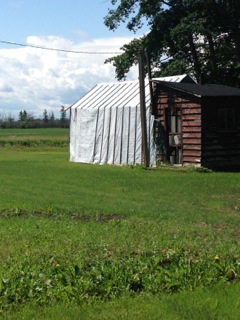 Wood and plastic combination in this greenhouse.
Wood and plastic combination in this greenhouse.Ventilation is an important aspect, so when purchasing or building your structure look at the options available. Some have doors that open automatically when the temperature reaches a certain amount; others can be manually opened at the sides or ends.
Artificial heat may be another consideration if you want to grow in your greenhouse all year round and you live in a colder climate. Check with professionals in your area regarding your options.
Greenhouses are best placed in a sunny part of your garden so they get 6 or more hours of sunlight each day. Before you spend money, make sure your area is suitable.
When choosing your style and type of structure for your greenhouse vegetable gardening consider your needs and lifestyle.
- What do you want to grow in it?
- What kind of garden site do you have?
- How much time do you have?
- How much money do you want to spend?
If you want something less expensive or smaller check out
cold frames or a
walk in tunnel as other options for growing plants under shelter.
Return from Greenhouse Vegetable Gardening to Indoor Vegetable Gardening
Recent Articles
-
Vegetable Gardening Frustrations: Lessons for a Better Harvest
Oct 29, 24 07:37 PM
Every vegetable gardener knows that while the rewards are sweet, the vegetable gardening frustrations can be a bit bitter. -
Small Space Vegetable Gardening
Sep 23, 24 05:06 PM
Small Space Vegetable Gardening - Tips for growing vegetables in small spaces. -
Why Fall Gardening?
Aug 16, 24 12:24 PM
Fall Gardening: A guide to a Bountiful Harvest.
